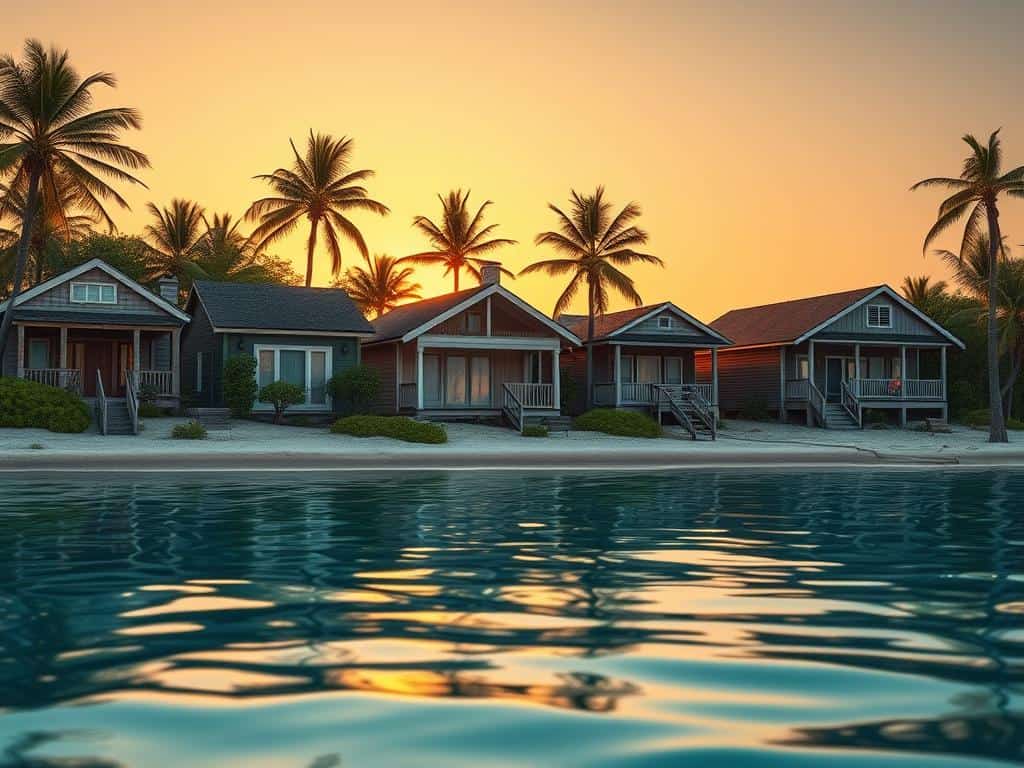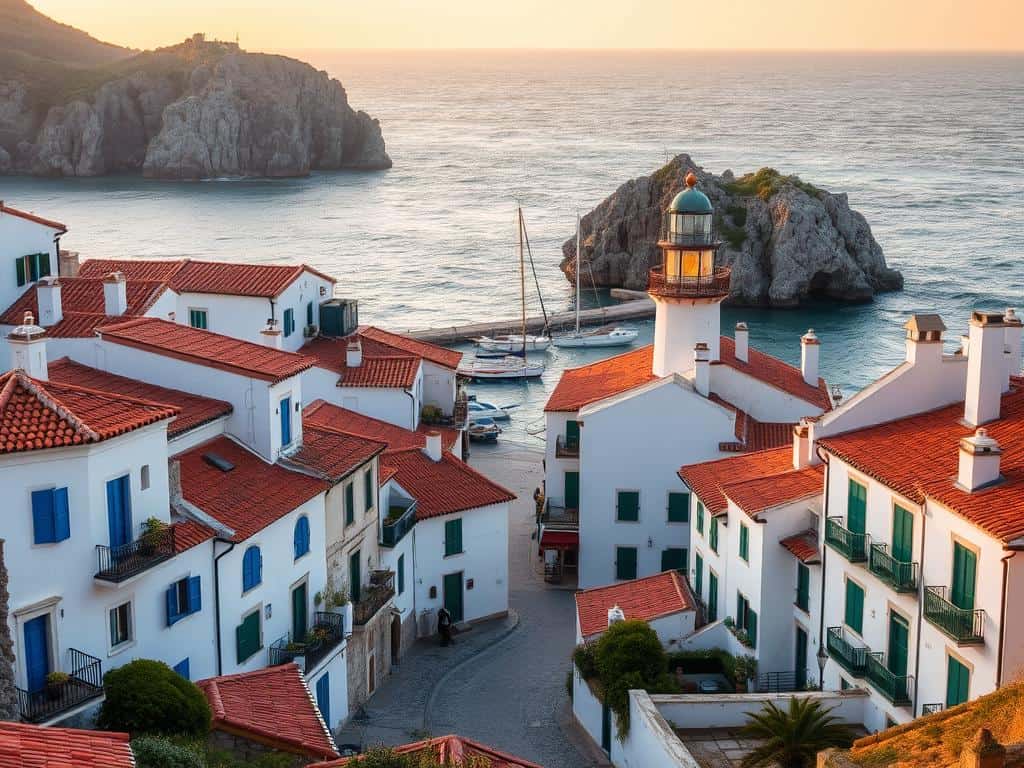Standing on the shore, I often find myself captivated by the stunning interplay of waves and sand. Last summer, I took a trip to Cape Cod’s picturesque coastline. Each evening, I strolled past beautifully designed beach houses that blended with the coastal landscape.
These oceanfront structures weren’t just visually stunning. Their maritime design showed their resilience against nature’s forces. As I admired their beauty, I couldn’t help but ponder the importance of coastal architecture in our ever-changing environment.
This article explores how these unique designs adapt to climate challenges. It looks at the materials that stand the test of time and the innovative strategies that shape our coastal communities today.
Key Takeaways
- Coastal architecture uniquely addresses the challenges of seaside living.
- Beach houses are not only about aesthetics but also functionality and resilience.
- Understanding how materials fare in coastal environments is key for durability.
- Innovative maritime design is essential for mitigating climate risks.
- Integration of coastal architecture with urban planning enhances community sustainability.
The Importance of Coastal Architecture in Today’s Environment
Coastal architecture is key in today’s world, thanks to climate change. These buildings offer shelter and help keep coasts safe from rising sea levels and storms. It’s important to design them in a way that they can change with the environment.
Adapting to Climate Change
Climate change is a big problem, and coastal buildings need to adapt. I think it’s vital to have structures with high foundations and materials that can withstand floods. This helps keep communities safe, even when the weather is unpredictable.
Mitigating Environmental Risks
Coastal areas face many environmental dangers. Using natural barriers like dunes and mangroves can protect against floods and storms. This approach is good for the planet and helps keep our ecosystems healthy.
Integration with Urban Planning
Good urban planning is important for coastal areas. I want to blend buildings with nature to create sustainable communities. This way, our cities can handle climate change and stay lively and useful.
Characteristics of Coastal Architecture
Coastal architecture is a mix of beauty and practicality, seen in beach houses. These styles are shaped by local traditions, geography, and the environment. Exploring these traits shows how they capture the spirit of coastal living.
Unique Styles of Beach Houses
Coastal architecture is known for its variety in styles. You’ll find everything from Cape Cod to Mediterranean, and Beach Cottages to Modern Coastal. Each style has its own charm.
Cape Cod homes are famous for their symmetrical look and shingle siding. They have a classic appeal. Mediterranean homes are welcoming, with stucco walls and terracotta roofs that soak up the sun.
Some homes show a Polynesian flair, while Modern Coastal homes are sleek with big glass windows. These designs bring comfort and blend with nature.
Materials Used for Oceanfront Structures
The materials used in coastal buildings are key to their look and durability. Architects choose materials like treated concrete and stainless steel for their strength against the sea. Tropical hardwoods are also favored for their beauty and toughness.
These materials make the buildings look great and last long. They protect against the harsh weather and keep the beauty of the coast alive.

Design Strategies for Resilient Coastal Architecture
Creating coastal architecture that’s both functional and beautiful is key. A good design makes living by the ocean better and keeps buildings safe from nature’s threats. Strategies include building up to avoid floods, using natural air flow for cooling, and letting in lots of sunlight to save energy.
Functional and Aesthetic Design
Coastal living is best when it’s both useful and looks great. Using shapes that fit with nature makes buildings blend in beautifully. This not only gives us amazing views but also shows respect for the environment.
Climate Resilience and Sustainability
Being green is critical for lasting strength. I design with green ideas like collecting rainwater and using natural cooling. This way, buildings use less from the city, which is important for areas facing climate change.
Innovative Technologies in Coastal Building
New tech in coastal building is exciting. It makes buildings stronger and uses less energy. I look into solar and wind power for homes to be energy-independent. The idea of floating homes is also fascinating, as it adapts to sea level rise.
Conclusion
Coastal architecture is more than just looks; it’s about standing strong against nature’s changes. We face big challenges from climate change. Architects and designers must use green practices to make coastal homes both useful and beautiful.
The future of coastal design is bright if we keep these values in mind. We can mix old charm with new tech to make homes better for the planet. This mix of style and function is key to building homes that last and connect us all.
Coastal architecture shows our duty to protect nature and our communities. It’s not just about buildings; it’s about leaving a mark that lasts. By following these principles, we can make our coastal areas strong and inspiring for years to come.



